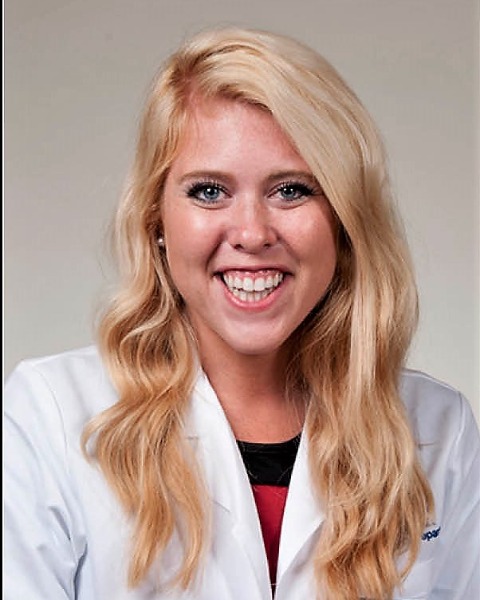Breast
E55: Optimizing Treatment Decisions in Microinvasive Ductal Carcinoma in Situ: Evaluating the Need for Surgical Axillary Staging

Kelly A. Kapp, MD (she/her/hers)
Breast Surgical Oncology Fellow
Georgetown University Medstar
Washington, District of Columbia, United States
Kelly A. Kapp, MD (she/her/hers)
Breast Surgical Oncology Fellow
Georgetown University Medstar
Washington, District of Columbia, United States
Kelly A. Kapp, MD (she/her/hers)
Breast Surgical Oncology Fellow
Georgetown University Medstar
Washington, District of Columbia, United States- LD
Lucy M. DeLaCruz, MD
Chief of the Breast Surgery Program and Director of the Ourisman Breast Center
MedStar Georgetown University Hospita, United States - CL
Christian Lava, MS
Research Fellow
Georgetown University School of Medicine, United States - KL
Karen Li, BBA
Research Fellow
Georgetown University School of Medicine, United States 
Austin D. Williams, MD, MSEd (he/him/his)
Breast Surgical Oncologist, Assistant Professor
Department of Surgical Oncology, Fox Chase Cancer Center; Philadelphia, PA, USA.
Philadelphia, Pennsylvania, United States- JS
Jennifer Son, MD FACS
Breast Surgical Oncologist
MedStar Georgetown University Hospita, United States - LB
Lauren Berger, BA
Medical Student
Rutgers New Jersey Medical School, United States - LR
Lindy M. Rosal, MD
Breast Surgical Oncologist
MedStar Georgetown University Hospita, United States - IG
Ian Greenwalt, MD
Breast Surgical Oncologist
MedStar Georgetown University Hospita, United States - MM
Monika Masanam, MD
General Surgery Resident
Georgetown University School of Medicine, United States - DS
Daisy L. Spoer, n/a
Medical Student
Georgetown University School of Medicine, United States
ePoster Abstract Author(s)
Submitter(s)
Author(s)
Surgical axillary staging is debated in clinically Microinvasive Ductal Carcinoma in Situ (cT1mi) due to the low occurrence of nodal metastasis. This study aims to assess the utility of axillary staging in clinically node-negative (cN0) T1mi breast cancer and provide insight for optimizing surgical treatment.
Methods:
This retrospective cohort study analyzed data from the National Cancer Database to investigate axillary status of patients with cT1mi breast cancer from 2012-2019. Patient demographics, clinical characteristics, treatment methods and pathologic findings were collected. Comparisons were made between those who did and did not undergo axillary surgery (ASx) and of those who did, between patients who were pathologically node-positive (pN+) vs. pathologic node-negative (pN-).
Results:
Of 10,843 patients analyzed, 9,220 (85.0%) underwent ASx, 1,623 (15.0%) did not. Mean age undergoing ASx and those who did not was 59.2±11.2 and 66.3±12.8 years, respectively. On univariate analysis, factors associated with ASx were private insurance, fewer medical comorbidities, HER2+ or triple negative, higher grade, lymphovascular invasion and mastectomy. Sentinel node biopsy was performed in 83%. Axillary lymph node dissection (ALND) in 17%. Final pathology upgrade to true invasive cancer (T1 or greater) happened in 29.3% of cases. Of 9,069 who underwent ASx with known pathologic nodal status, 8,512 (93.9%) were pN- and 557 (6.1%) were pN+. Factors associated with odds of positive nodes were younger age, Black race, lymphovascular invasion, and mastectomy. Of pN+ patients, 64 (0.7%) had ≥3 positive nodes and would require ALND. On subset analysis of the 4,190 patients undergoing mastectomy, 244 (5.8%) did not undergo ASx, while 3,946 (94.2%) did, of whom 373 (9%) were pN+. Regarding adjuvant treatment, more patients who underwent ASx received chemotherapy (12% v. 8%) Those who were pN+ were more likely to receive chemotherapy (58% v. 12%). Similar proportions of patients who did and did not undergo Asx received adjuvant radiation (5% v. 4%). Those undergoing Asx, a higher proportion of pN+ underwent radiation (32% v. 5%).
Conclusions:
Surgical axillary staging for patients with cT1mi breast cancer is common, despite majority being pathologically node-negative. A higher proportion are being subjected to morbidity of ASx than supported by pathologic stage. Nodal status impacts decision for adjuvant therapy. Identifying patient factors associated with upgrade and higher probability of pN+ may allow personalized surgical options to minimize ASx morbidity.
Learning Objectives:
- Identify the issue proposed that patients are being subjected to morbidity not supported by pathologic stage when undergoing axillary staging with cT1mi breast cancer despite majority being pathologic node negative.
- Observe that based off these results delineating certain characteristics associated with pathologic nodal status, patients may be able to benefit from personalized surgical treatment and minimize morbidity.
- Propose development of certain criteria for future surgical recommendations to avoid surgery in those patients that are unlikely to be pathologically node positive.
